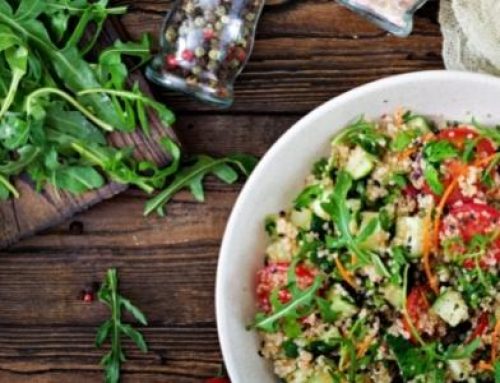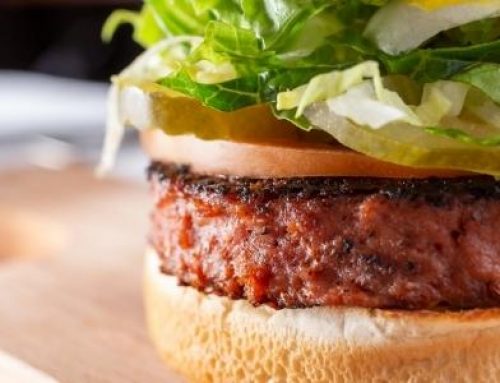
Winter recipes are all about comfort, warmth and eating something that makes you feel satisfied at the end of it! Classic winter recipes such as soups, stews and curries offer us comfort and nourishment during the cooler months and are also great options to cook in bulk for your weekly meal plan. During the shorter, darker months, our bodies respond best to a nutrient-rich yet well-balanced diet, in order to support immune function and help with overall energy levels.
It is completely natural to crave more hearty and warming meals during winter. Our cravings tend to be quite seasonal and as the weather gets warmer, only then do our salads return to lunch boxes and dinner tables across the country. However, with an influx of vibrant winter produce comes an opportunity for different salad creations that you might life to try: Warm Salads!
The recipe for success:
To build a satisfying warm salad, you shouldn’t have to sacrifice enjoyment or taste as a result of making that transition from your current go-to hot meals. Focus on what you enjoy eating, what can be easily transported, what methods of cooking are best for you, what will make you feel energised and most importantly, what is in season to be the most-cost effective.
As a rule of thumb, make sure your salad includes a good foundation of vibrant vegetables, a source of complex carbohydrates, lean protein, and some healthy fats.
Good nutrition is about variety, so the more different types of whole, fresh foods you can include over the course of a week, the better!
Here is how to get your salad fix all year long:
Start with a base:
Mixed greens are a great foundation for any salad creation. They provide us with many health-related benefits (as well as the opportunity to get us closer to those five daily serves of vegetables!). They contain a variety of nutrients such as iron, vitamin C and folate as well as antioxidants to support immune function. Try options such as:
- lettuce,
- spinach,
- kale and/or
- rocket





Eat the rainbow:
Next add your chosen vegetables cooked in whatever methods are most convenient and tasty for you. This can range from roasting, steaming, blanching, air-frying all the way through to fresh. Don’t forget to season them with salt and pepper and dried herbs and spices for extra flavour! Additionally, in terms of seasonal vegetable produce, here are some typical winter veggies to try and include more of:
- Carrot and celery
- Pumpkin
- Garlic, onion, swede and leek
- Silverbeet
- Zucchini
- Cauliflower and broccoli
- Brussel sprouts and cabbage
- Green beans









Try to include at least 2-3 different vegetables in your salad and remember that more colour equals more nutrients.
Pick your protein:
Try to bulk out your salad with a serving of lean protein to help manage appetite and to keep you feeling fuller for longer.
Protein-rich foods will not only provide you with protein but will also provide you with other nutrients including B12, iron, zinc, and calcium. Include foods such as:
- lean red meat,
- poultry,
- fish,
- eggs,
- tofu,
- legumes, or
- low-fat cheeses
Throwing them freshly cooked into your salad will help ‘warm’ up the whole meal.







Clever carbohydrates:
Don’t skip out the whole food carbohydrate rich foods! Your body needs them for energy and nutrition, plus they’ll play a key role in your meal staying satisfying. Carbohydrates are the main source of fuel for our brain and muscles to keep us going throughout the day. Skipping them will leave you feeling hungry in-between meals!
Limiting ultra-processed carbohydrates is a good idea so we need to be clever with our carbohydrate choices for our salad creations and aim to include more complex, whole grain based options.
Here are a few ideas which can be served cold or alternatively warm for that added comfort factor:
- Sweet potato or potato
- Quinoa, buckwheat, or barley
- Brown or wild rice
- Couscous
- Wholemeal pasta or noodles
- Legumes, beans, or lentils (if blood glucose control is a factor you need to consider)







Healthy fats:
Adding a source of healthy fats to your warm salad is the key to ensure it is makes you feel full. Avocado, nuts and seeds, olive oil, oil-based dips or dressings and various cheeses provide our bodies with fat-soluble vitamins and help better absorb them from our vegetables, including vitamins A and E, which are vital for good health.
Just note that healthy fats, while they are essential in a balanced diet, will provide you with the same amount of energy as fats that are less healthy. So, try not to go too crazy with the fats, and stick to smaller portion sizes. Aiming to include one portion-controlled fat source in your salad would be a great idea or alternatively, you may choose to do half serves across two different sources.




Get Fresh Food Delivered to Your Door!
If you’re a Canberra and surrounds resident, you can grab the all the ingredients for these ideas from our friends at Alpha Fresh and they’ll deliver them straight to your door. You can get fruit, vegetables, bread, meat, poultry, seafood and more.











